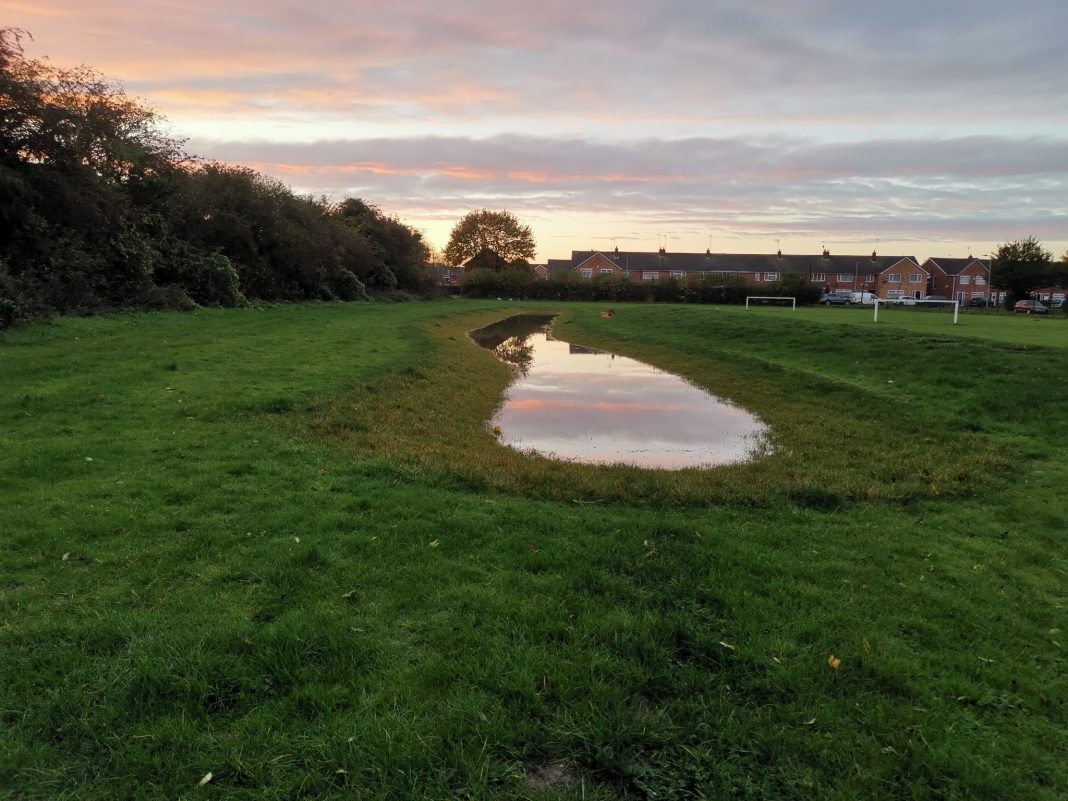An Environment Agency project to create a large “aquagreen” that will reduce flood risk to more than 870 properties and key infrastructure in east Hull has been given the go-ahead.
Planning permission for the project at Castlehill has now been approved by Hull City Council and East Riding of Yorkshire Council, and work is expected to start in late spring.
A public consultation was launched in September 2020 on proposals for the aquagreen – a versatile green space, south of the old Bransholme Dairy Farm, which will store excess water during a flood and slowly release it back into the drainage system after the peak of the flood has passed.
Homes in North Carr and Sutton are currently at risk of flooding from water in the Holderness and Sutton Cross drains after heavy rain. The Holderness Drain is a man-made river channel. When it becomes full, water flows into Sutton Cross Drain, overwhelming the local drainage system and increasing the risk of flooding for homes in the area. This area narrowly avoided disaster in November 2019 when other parts of Hull were affected by flooding.
The aquagreen is the second phase of the £28.5million Holderness Drain Flood Alleviation Scheme, and follows construction of the new East Hull Pumping Station.
Preliminary work to remove vegetation and shrubs in order to deliver the aquagreen project is set to begin on site imminently.
Andrew Barron, the Environment Agency’s flood risk adviser for Hull, said: “This is a really important step in the delivery of the Holderness Drain Flood Alleviation Scheme, which will reduce flood risk to hundreds of homes and businesses in the North Carr and Sutton areas.
“The scheme, which also includes a new pumping station, will contribute to making the Humber region more resilient to the effects of climate change.”
This partnership scheme, led by the Environment Agency and supported by Hull City Council, East Riding of Yorkshire Council, National Highways and the Hull and East Yorkshire Local Enterprise Partnership (HEY LEP) Local Growth Fund programme, will better protect around 1,000 properties and help to provide a long-term, more sustainable solution to the problem of flooding in this area.
The HEY LEP secured £2.14million towards the project through the Local Growth Fund as part of the Government’s commitment to the Northern Powerhouse.
Additional benefits resulting from the scheme include the creation of green space for people to enjoy and improving access to the Castle Hill monument.
Councillor Dean Kirk, Hull City Council’s portfolio holder for flood risk, said: “We are delighted that this important phase of the Flood Alleviation Scheme on Holderness Drain has received planning consent. The works at Castlehill will deliver many more benefits alongside the reduction in flood risk to homes and businesses.
“These include job creation for local people through the materials and workforce supply chain in the construction phases, habitat creation, improved water quality, connecting communities with the heritage and nature of the site and amenity value.
A more detailed description of the changes to the plans can be found in the full report, which can be downloaded here: Holderness Drain Flood Alleviation Scheme.
Residents with questions should email the Environment Agency project team at: HoldernessdrainFAS@environment-agency.gov.uk
To find out about flood risk in your area and to sign up to the Environment Agency’s free flood warning service, visit www.gov.uk/flood or call Floodline on 0345 988 1188.



